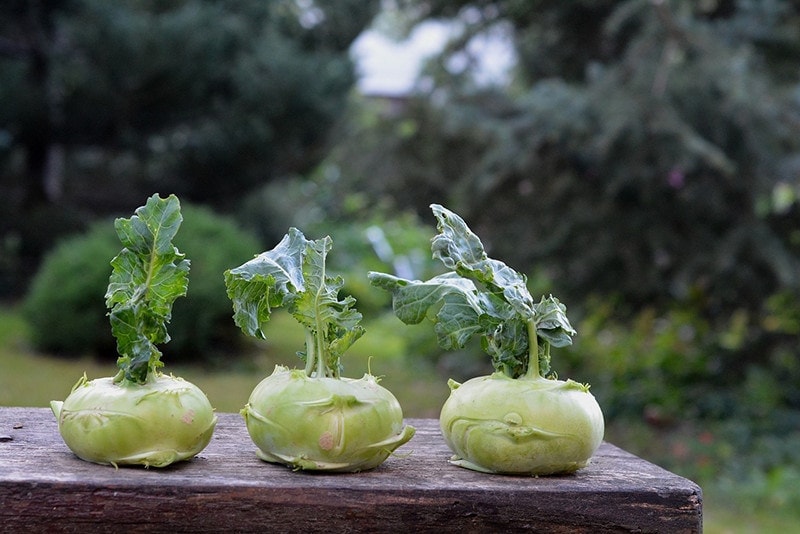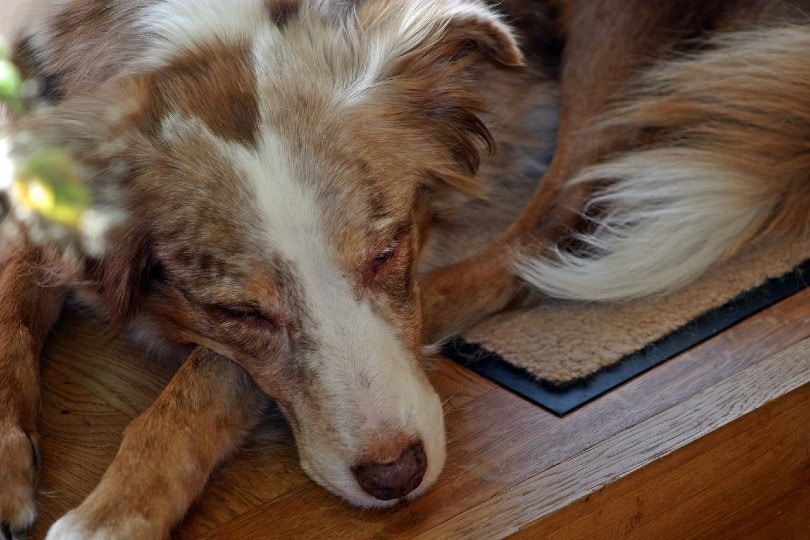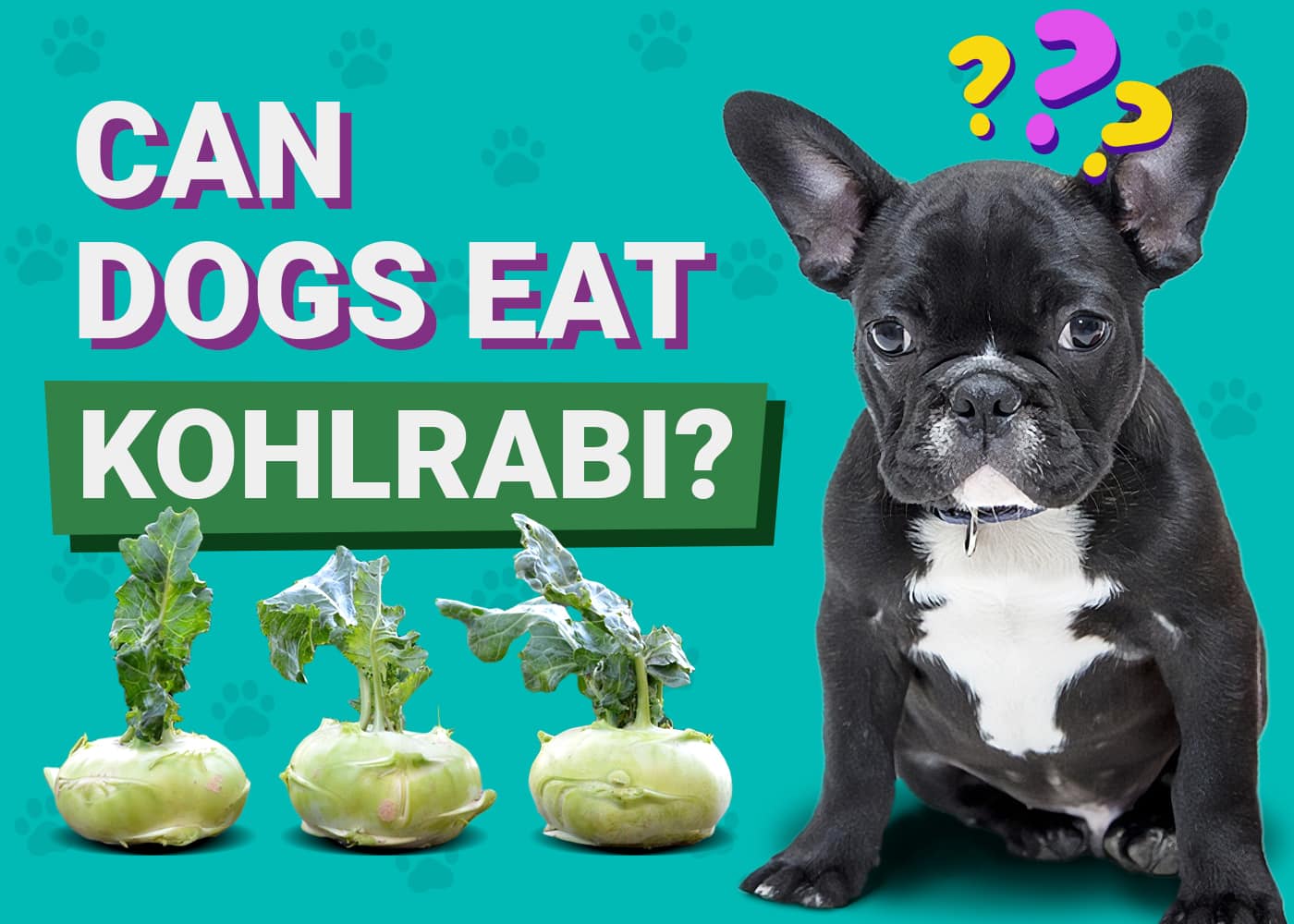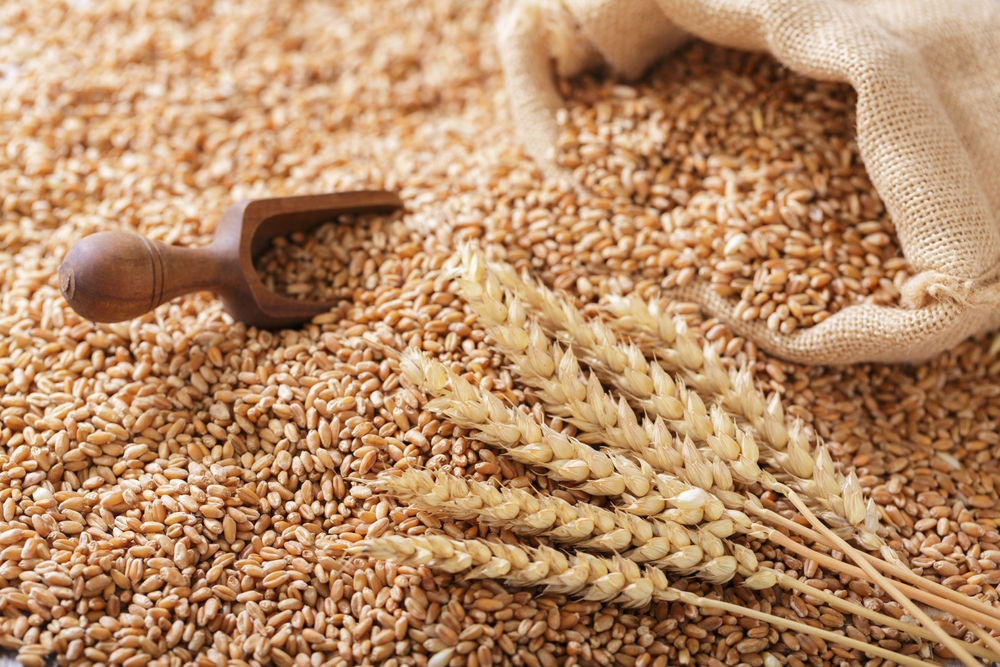The vegetable kohlrabi might not be very well known to many people and even the name alone might sound kind of foreign. It is characterized by being very similar in appearance and taste to the common cabbage.
This nutrient-dense vegetable is very healthy for people, but can dogs eat kohlrabi? The answer is yes, kohlrabi is safe for your dog. If your dog steals some off the ground or your plate you don’t need to rush to your vet. However, be mindful that some of the seasonings or other ingredients used to cook kohlrabi could be toxic to your dog (for example, garlic and onion). If you have a dog that you are thinking about feeding human food, it’s important to consult with your vet first and have a clear idea of which ones are safe for them. Continue reading to learn about dogs and kohlrabi.
Should I Feed My Dog Kohlrabi?
While your dog can eat a few pieces of kohlrabi, they do not need it. Kohlrabi is not a standard part of a dog’s diet, so they do not need it to thrive.
Although it is a healthy vegetable and a suitable snack, it’s important to be careful how much or how often you feed it to your dog. Because dogs are natural carnivores, it’s important to feed them a healthy canine diet of vitamins and nutrients, and other dog-safe ingredients.
You should watch your dog’s health when you feed them kohlrabi for the first time to see if they get an upset stomach or other negative signs that could be a result of eating them. These signs can include gas or diarrhea.

Are There Vegetables Dogs Cannot Eat?
Of course! Not every food that humans can consume is automatically safe for dogs too. And even the technically safe ones should only be fed in moderation and not as a substitute of your dog’s diet. Some vegetables are known to be toxic for dogs, mainly garlic, onions, shallots, and chives.
There are other vegetables known to cause health issues in dogs including some mushrooms or rhubarb. It is safer to assume that all mushrooms found in the outdoors are poisonous and contact your vet or Pet Poison Helpline if your dog eats one. Rhubarb leaves contain soluble oxalate crystals, and when ingested in large enough quantities, it can result in poisoning in dogs.
If you need to speak with a vet but can’t get to one, head over to PangoVet. It’s an online service where you can talk to a vet online and get the personalized advice you need for your pet — all at an affordable price!
How Do I Know My Dog Is Having a Toxic Reaction?
There are signs that your dog might be having a toxic reaction to something that you feed them and it’s important to watch out for them. There are a variety of signs of poisoning in dogs, depending on the substance. Some reactions are more immediate, such as drooling, lip smacking, vomiting, abdominal discomfort, gas, or diarrhea, but others could arise after time. These reactions could be things like changes in appetite, tremors, and weakness among many others.
It’s important to keep an eye on any negative reactions that arise and what foods cause them, so you know which ones not to feed them again.

In Conclusion
The best way to keep your dog healthy and happy is to keep track of their diet and feed them the right foods. Always consult a veterinarian if you have questions about what’s best to feed your dog based on their breed, age, size, and more. There may be better foods for a dog who has certain needs such as issues with their weight, predispositions to illnesses, and more.
Don’t replace your dog’s diet with human food without consulting with your vet and doing the research first.
See Also:
- Can Dogs Eat Chick-fil-A? Vet-Reviewed Nutrition Facts & FAQ
- Can Dogs Eat Lollipops? Vet-Reviewed Facts & FAQ
- Can Dogs Eat Rhubarb? Vet-Verified Nutrition Facts & FAQ
Featured Image Credit: utroja0, Pixabay













